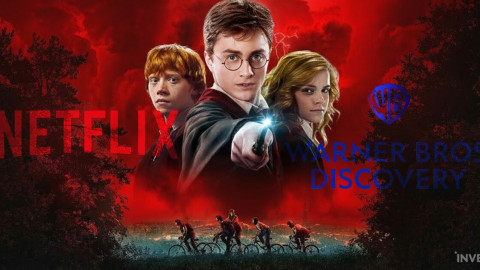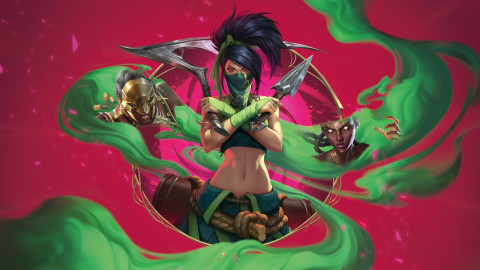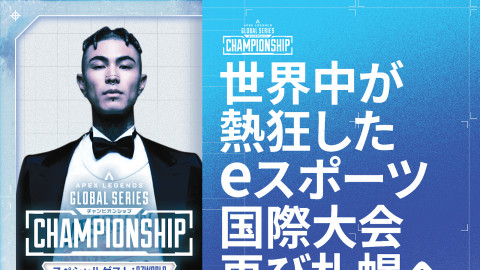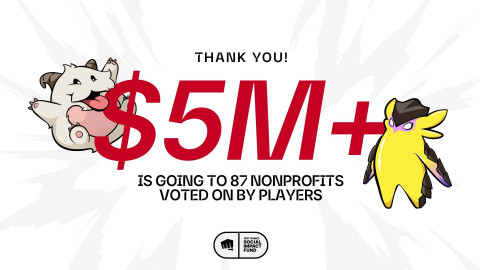
Linus “Pipsqueak” Nordin executes a near-perfect reaction-based tech chase on Aaron “Professor Pro” Thomas, cementing a three stock lead in the Grand Finals of a stacked European tournament. Literally, as the game consumes the small Fox stock icon, Pipsqueak’s computer crashes. Pipsqueak will have to replay the set.
For Pipsqueak, this is a disaster. Pipsqueak is a 21-year-old Swedish wunderkind who has a string of silver medals and a history of narrowly losing high stake sets.
“After the PC blue screened I was like, ‘This is so cursed! There is no way I can win,’” Pipsqueak says in the post-game interview.
Returning to game one, Pipsqueak misses a ledgedash, accidentally air dodges, and loses his first stock in about 30 seconds. The ledgedash is a notoriously difficult but essential technique for Fox mains to master. Fail, and you leave yourself wide open. Succeed and you gain a massive and invulnerable dash that gives Fox one of the best defensive ledge games in Melee.
At a high level, these mistakes (and the punishments that follow) define the spacies. If you want to compete with the spacies, you don’t just need to be clean, you need to be cleaner than the opponent.
“I was up three stocks against one and I can’t get it to work, I can’t get anything to work, it’s fine, let’s not tilt. And then he takes stock one in like 2 seconds and I’m like, ‘Huh. I guess it is cursed!’ ”
Pipsqueak gets to tell the story in a post-game interview because, cursed or not, his Fox was clean.
Pipsqueak would rally from the mental setback and 3-0 Professor Pro to take the European Open Finals during the 5 Days of Melee, a massive, ongoing charity event held by the Melee community. In a game like Melee, where talent exists in levels, this is a statement win. More than just a victory, it’s a “Challenger Approaching” screen for a new top competitor.
The best way to demonstrate Melee’s levels is to show them. In 2018, Pipsqueak was a strong regional level player. Here is how he compared to one of the best in the world, William “Leffen” Hjelte.
Leffen trounces Pipsqueak so thoroughly that the commentators of the match need to remind the audience that Pipsqueak is in top 24 of a big European tournament and is a good player. This is the difference between levels. Leffen can 4-stock Pipsqueak, who can 4-stock a strong local level player, who can 4-stock most people reading this article.
In the two years since then, Pipsqueak has leveled up. Throughout 2020, Pipsqueak has collected wins over high profile Europeans like Levingy and Solobattle (Finland’s best players) as well as Pricent (89th) and Amsah (91st).
The EU Open Finals would be the first tournament where he did it all in one run. 3-2 over Kins0 (a rising German talent), 3-0 over Frenzy (ranked 76th worldwide), two 3-0’s over Professor Pro (ranked 34th).
The big tournament win marked a notable mentality improvement, not just for overcoming a momentum-killing blue screen but for coming through in the clutch. Pipsqueak has been in a position to win before, only to drop gold before he could collect it. Frenzy 6-0’d him in a Grand Finals reset and Professor Pro reverse 3-0d Pipsqueak at Summit 10, capping the last game off with a stylish three stock comeback.
Over the last two years, Pipsqueak built a style close to the one Leffen used to beat him down in 2018. At his best, Pipsqueak is insanely clean with Fox’s many high-precision techniques. Much akin to Leffen, it is deadly to drop a tech or recover straight to ledge against Pipsqueak because it’s rare he drops a reaction-based punish.
However, Pipsqueak wears his inexperience pretty clearly. Under heavy pressure, he’ll begin to drop certain techniques and he’ll open himself through bad decisions. Professor Pro has over a decade of experience in Melee and is in many ways Pipsqueak’s opposite.
Where Pipsqueak is relentlessly technical, optimal, and flowchart-based, Professor Pro is creative, strange, and unshakeable.
In his comeback, Professor Pro used less orthodox high recoveries to avoid Pipsqueak’s vice grip on the ledge. In approach, Prof broke Pipsqueak’s patient wall of hitboxes through baiting out bad defensive tendencies. Prof would empty hop in, provoking an up-smash out of Pipsqueak, then use a double jump or mix up his fall timing to dodge the hit, then whiff punish. In neutral, Prof defied Pipsqueak’s stage control with wired and weird movement.
It was enough to stump the young player. By the end of set, the webcam caught Pipsqueak reeling back in his chair, thinking about the game that slipped between his fingers.
This is why Pipsqueak’s recent win at the EU Open Final is a statement. In face of heavy mental damage and against an experienced and creative top player, Pipsqueak played his game and won.
More specifically, Pipsqueak’s game is a very Swedish one. That only makes sense, given Pipsqueak is well-known to Sweden’s scene, calling himself “Every Swede’s Younger Brother” in his Twitter bio. He’s second in the region’s power rank, right behind Leffen. That’s no small feat.
In the world of Melee, Europe is the second strongest major region behind NA and Sweden might just be Europe’s best region. That’s in no small part due to Armada, Leffen, and Swedish Okizeme.
For the uninitiated, Okizeme (Oki for short) is a fighting game term that traditionally describes the game played on knockdown. The player on the offensive wants to react or read the opponent’s defensive wake-up option and punish. The player on the defensive wants to be unreadable and unreactable.
In Melee terms, Oki could be seen as tech chasing or as punish/advantage as a whole. I’d argue Oki extends past tech chases and punishes, going into recovery and ledge trapping since these are similarly limited-option defensive positions. I’d also argue it’s less encompassing than advantage, which includes pieces of stage control and game state Oki wouldn’t.
Still a close relative to punish and advantage, Oki is vital to Melee because when fully charted out and optimized, many top tier characters can react to and cover nearly all defensive options if they’re playing cleanly.
The Swedish Okizeme is relentlessly optimized, reaction-based, and charted. While similar to the historic East Coast style, the Swedish style isn’t as safe or campy and will take high risk, hard execution test options so long as they yield high reward. To be entirely transparent, it’s a style that may belong more to Armada and Leffen than Sweden.
Armada shaped the style from as early as his breakout years in 2009-10, using turnips and deep float aerials to disrupt predictable and normally safe recovery patterns. He would later do the same with Fox, popularizing the Armada shine, which hard-punishes a lazy Fox main that’s trying to recover too close to the ledge. Leffen branches this out not just to Fox’s offensive Oki but to Fox’s defense as well. Leffen might be the best fox main ever because he’s the cleanest, not only hitting perfect reaction-punish timings but also rarely missing ledge dashes, shortens, and recovery angles.
In recent years, Pipsqueak not only adopts that style but adds his own innovations to it. His platform tech chases are uniquely potent even for the game’s great Fox mains. He has several options mapped out based on what the opponent will do and these options work on reaction, consistently yielding big conversions.
Defensively, Pipsqueak likes to use buffer jumps in ways that seem rare even at high levels. Pipsqueak uses the game’s input buffering system to get near-instant jumps out of shield and sometimes out of hit, throwing off an opponent’s punish option. Watch below as Pipsqueak jumps out of Frenzy’s laser so quickly that he seems to teleport.
As far as the minute conventional aspects go, Pipsqueak is very clean. His ledge coverage and Armada shines are very sharp, which was vital against Professor Pro. Pipsqueak’s near-impenetrable hold on the ledge meant recovering to it could only be a mix-up, or occasional option for Prof. In response, Prof tried to recover high. However, Pipsqueak adapted to this habit and took to baiting and punishing high recoveries using impeccable movement and timing.
These punishes already sound tough but in practice and during a match, it becomes clear just how staggeringly hard they are. My favorite punish comes in game 2 of Grand Finals, where Pipsqueak closes out by jumping down to the ledge, baiting Prof into a high recovery. Then, jumping up to the platform, wavedashing backwards, sliding off the platform, and shining Prof out of a side b and off the stage.
I recommend using the “<” and “>” keys on YouTube to watch it play out frame by frame. You’ll notice the shine is frame-perfect.
In his post-game interview, Pipsqueak made sure to shoutout his friend and fellow rising EU talent, Tommy “Pricent" Lindås. Pricent warmed Pipsqueak up between matches, brutalizing Pipsqueak before Pipsqueak went on to brutalize the bracket. These two players represent the rising tide in what is historically Melee’s underdog region. Separated by gulfs of geography and country, it can be harder for the EU scene to meet as often as NA does.
Take Armada and Leffen out of the equation and the gap between NA and EU widens even further. There are European players that reach that high level, that top 50 level, but few that reach the top 10 level of legend. However, Armada and Leffen show that the European anomaly always exists.
Watching Pipsqueak, you can’t help but wonder if you’re watching the next anomaly come into form.
The patient stage control, the fully mapped punish game, the inhumanly fast reactions, the incredibly clean execution on the game’s hardest techniques - the potential feels animated and living. However, it’s far from realized. Europe’s horizon is an entire continent-wide.
Pipsqueak and Pricent both yet to walk the hardest stretches. Before we can even speak of Leffen, Peach main Álvaro “Trif” García Moral guards the gates. Ranked 16th, a clear second-best in Europe, Trif is the triumphant return of the EU Peach and has thus far dismantled Pipsqueak in their sets. Before even Trif, there are new stars and old regional demi-gods like Nicki, Pricent, Levingy, Solobattle, Professor Pro, Frenzy, and many more.
Pipsqueak has only just started to beat the field and lost to Solobattle and Levingy in the invitational bracket that took place right before the Open Final. It first takes beating all of the wide field before the horizon and beating them over and over again. Then, only then, at the end of the line drawn around the continent, does he reach Leffen.
Reaching that point alone is an honor that solidifies a player as one of Europe’s greats. Recently, more of Europe’s players seem to have reached a top 50 level too. The era of slippi seemingly helped revitalize the region, giving players the chance to spar over borderlines and seas. However, Leffen and the international top 10 sit in another level above even the greats of Europe.
Pipsqueak isn’t there yet.
Given the vast disparity between Melee’s levels, he may have years to go until then - but he is just 21 years old. More than that, he’s only two years out from the tournament where he got brutally four-stocked by Leffen. It’s only right to wonder what comes next for “every swede’s little brother.”
Sort by:
Comments :0






